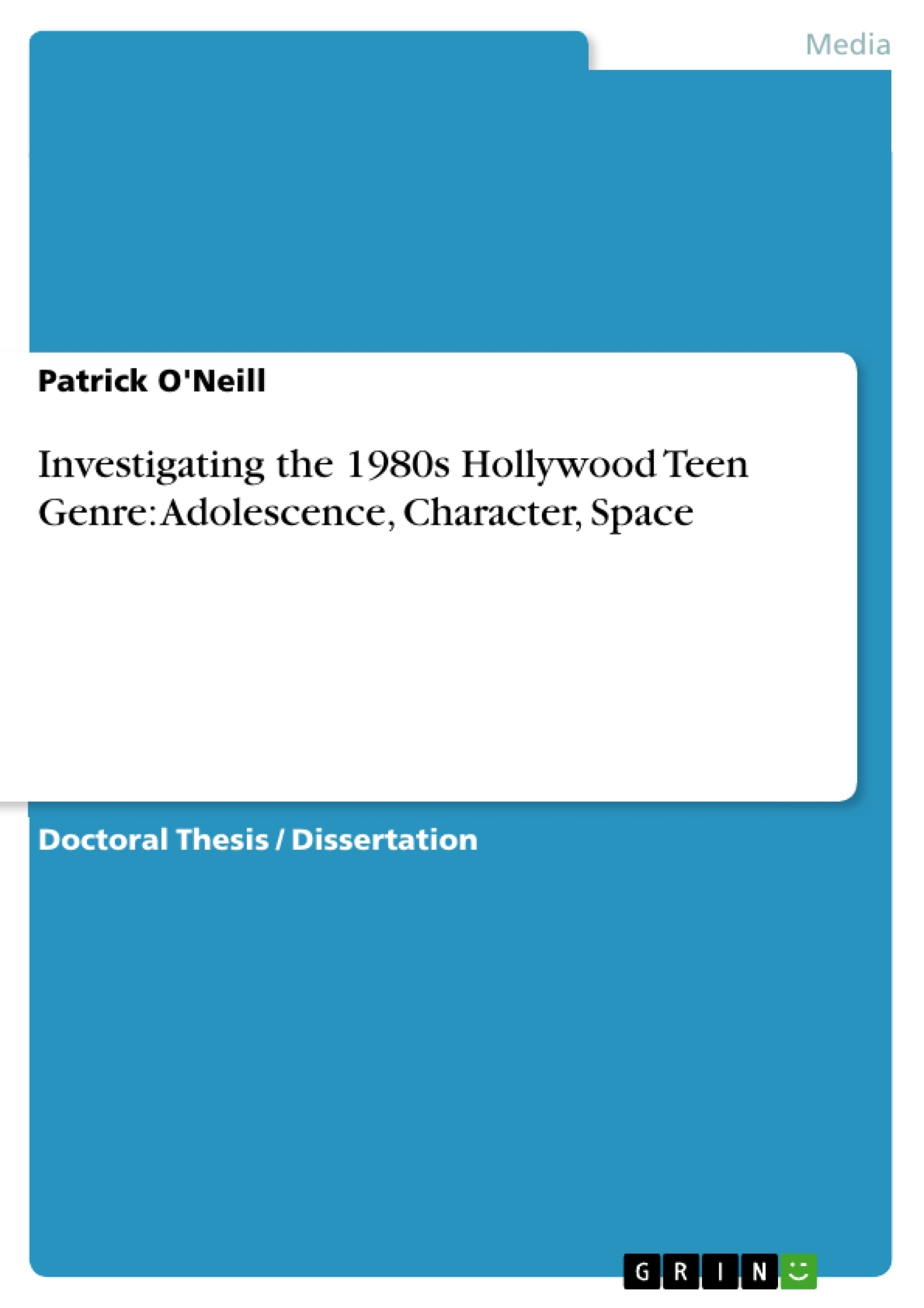The 1980s Hollywood teen genre is a topic which has not attracted significant academic interest in the context of doctoral research. Only recently have writers focused on this period in wider scholarly texts, often positioned in relation to other periods of the teen genre, but not extensively concentrating on the 1980s. This research will address what is a lack of detailed analysis of this cinematic era and offer a contribution to knowledge in terms of Hollywood genre cinema.
The aim of this thesis is to argue that teen films produced during the 1980s effectively represent youth concerns and the coming-of-age process, for example, in terms of adolescent identity, the different 'roles' the characters play, sexuality, gender, relationships, class issues and the generational divide. These concerns will often resonate with the wider sociopolitical and economic landscape of the Reagan era. The research will investigate these themes in individual films and then go on to analyse them using several films across the generic spectrum to show how the genre achieves a unity and synergy, despite differences in tone and attitude of the films under scrutiny. The films covered herein will be a selection from the subgenres of the 1980s teen films: the teen sex comedies examined were produced during the first half of the decade; the more romantic comedies and dramas were generally made from the mid-1980s onwards. Also scrutinised will be several delinquent teen films.
One of the methodologies used to underpin the central argument is related to the structuralist theories and their binary oppositional factors. This will attempt to make sense of the portrayal of a youth culture by exposing its contradictions. This approach will be merged with film genre theories, for instance, in relation to a film's semantic/syntactic axis and the symbolic use of generic sites and iconography. Ideas relating to adolescence and its phases will also form part of the analysis.
The principal conclusions from this debate will be that the 1980s teen genre is a topic worthy of rigorous academic interrogation, despite often being critically neglected and sometimes maligned. The genre has the potential to represent and articulate youth cultural concerns and wider societal implications, and the films therein should be considered important media documents.
Frequently asked questions
What is this document about?
This document is a language preview, likely from a publishing company, containing OCR data intended for academic analysis of themes. It includes elements such as the title, table of contents, objectives and key themes, chapter summaries, and keywords.
What is the central theme of the text?
The central theme focuses on the 1980s Hollywood teen genre, specifically addressing its representation of youth concerns and the coming-of-age process within the sociopolitical and economic landscape of the Reagan era.
What are some of the key issues explored in the text?
Key issues explored include adolescent identity, the different roles characters play, sexuality, gender, relationships, class issues, the generational divide, and the impact of the Reagan era on youth culture.
Which subgenres are examined?
The research analyzes teen sex comedies, romantic comedies, dramas, and delinquent teen films produced during the 1980s.
What methodologies are used in the analysis?
The methodologies used include structuralist theories with binary oppositional factors, film genre theories (semantic/syntactic axis), theories of space and its symbolic value, and research relating to adolescence and the coming-of-age process.
What are the major conclusions drawn in this preview?
The principal conclusions suggest that the 1980s teen genre is a topic worthy of rigorous academic interrogation and that the genre has the potential to represent and articulate youth cultural concerns and wider societal implications, making the films important media documents.
Which films are discussed in the preview?
Several films are mentioned, including: Lucas, Fast Times at Ridgemont High, Revenge of the Nerds, The Breakfast Club, Some Kind of Wonderful, Heathers, River's Edge, The Last American Virgin, Porky's, Little Darlings, Sixteen Candles, Pretty in Pink, Risky Business, Ferris Bueller's Day Off, All the Right Moves, Vision Quest, The Outsiders, Class of 1984, and Reckless.
What are the primary conclusions about the representations of the adults in the films?
Adults are often portrayed in a negative light, ranging from comical to serious portrayals. They are often depicted as corrupt, inept caricatures, emotionally detached, violent, or abusive.
What are the common teen generic sites?
The common teen generic sites include the shopping mall, the teen bedroom, the parental home, the high school, the city, the beach, and the car.
What key terms or individuals are mentioned?
Key terms include "storm and stress," teen stereotypes (jock, nerd, popular girl, etc.), binary oppositions, coming-of-age, teen angst, and consumerism. Key individuals mentioned include Ronald Reagan, John Hughes, Claude Lévi-Strauss, Vladimir Propp, and G. Stanley Hall.
What is the structure of the entire document?
The structure of this language preview includes Acknowledgements, Abstract, Table of Contents, Introduction, Themes and Issues, Methodology, Chapter Overview, the Literature Review, Filmography, and Bibliography.
- Quote paper
- Patrick O'Neill (Author), 2016, Investigating the 1980s Hollywood Teen Genre: Adolescence, Character, Space, Munich, GRIN Verlag, https://www.grin.com/document/337986




